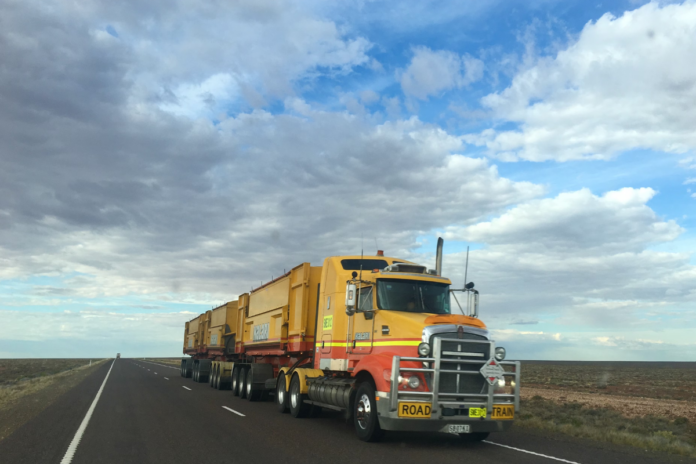Trucks are the backbone of the U.S. economy, playing a crucial role in keeping everything moving. According to the American Trucking Association, trucks haul about 72.6% of the nation’s freight by weight. This impressive feat translated to $940.8 billion in gross freight revenues in 2022, making up 80.7% of the nation’s freight bill.
Despite their vital role, truck drivers face a unique set of challenges that need addressing to improve the system. Let’s take a closer look at some of the biggest problems truck drivers in the U.S. encounter on the roads today.
Traffic Congestion
One of the toughest challenges truck drivers face is dealing with traffic congestion. Urban areas, especially during rush hour, can become a nightmare of gridlock, causing delays that disrupt the entire supply chain.
In fact, a report from TRIP found that in 2022, traffic congestion cost the trucking industry a whopping $94.6 billion in extra operational expenses. This staggering amount stems from commercial trucks being stuck in traffic for an annoying 1.3 billion hours.
Imagine the frustration of being on the road for that long, unable to move an inch. Not only is it a waste of time, but it’s also burning through fuel and money.
Road Conditions
Uneven road surfaces, potholes, and poorly maintained highways can make driving hazardous and uncomfortable. Bad road conditions can lead to increased vehicle maintenance costs and higher risks of accidents.
Truck drivers often have to navigate through construction zones, which can further complicate their routes and schedules.
Which state has some of the worst roads in the US?
Rhode Island is known for having some of the worst roads in the US. The state’s infrastructure challenges include poorly maintained road surfaces, frequent potholes, and congestion, contributing to a frustrating driving experience.
Parking Problems
Finding safe and legal parking is a constant headache for truck drivers. According to The New York Times, across the nation, there is just one truck parking space for every 11 drivers. This scarcity forces many drivers to park in unsafe or unauthorized areas, risking fines and their own safety.
On average, drivers sacrifice about an hour each day just searching for a spot. This adds up to around $5,500 a year in lost earnings, a hefty 12% cut in pay.
To address this issue, many companies are stepping up with solutions like paid truck and semi-truck parking. These services offer secure, reserved parking spaces that can be booked in advance or on the go, often through user-friendly apps.
While these options cost money, they offer peace of mind with safe parking and rest, Big Rig Parking notes. They help drivers comply with Hours of Service regulations and reduce the stress and time wasted in the daily hunt for parking.
Regulatory and Compliance Issues
The Federal Motor Carrier Safety Administration (FMCSA) imposes Hours of Service (HOS) regulations to ensure that drivers are well-rested and operate safely. While these regulations are designed to prevent fatigue-related accidents, they can also create logistical challenges.
Drivers must meticulously plan their schedules to comply with these rules, which can sometimes lead to delays and increased stress.
Compliance with Environmental Standards
Truck drivers also face growing pressures to meet environmental regulations. New emission standards require older trucks to be retrofitted or replaced, which can be a significant financial burden. Compliance with these standards is not only essential for legal operation but also for reducing the environmental impact of trucking.
What are the environmental standards for trucks?
Environmental standards for trucks are regulations designed to limit the amount of pollutants that commercial trucks can emit. These standards often include limits on nitrogen oxides (NOx), particulate matter (PM), and greenhouse gases (GHG). They aim to reduce the environmental impact of trucking by promoting cleaner technologies and fuels.
Cargo Theft
Cargo theft is a growing issue for truck drivers. According to CNBC, incidents of cargo theft shot up by more than 57% in 2023 compared to the previous year.
Forbes adds that there were 1,183 reports of cargo thefts in 2023, each averaging a substantial loss of $586,917. This brought the total value of stolen goods to an eye-popping $694,327,811.
High-value loads are prime targets for thieves, prompting drivers and companies to ramp up security measures. Securing a truck and its cargo requires constant vigilance, especially during rest breaks or overnight hauls, to prevent these costly losses.
Physical and Mental Health
The sedentary nature of truck driving can lead to various health issues, including obesity, cardiovascular problems, and musculoskeletal disorders. Long hours of sitting, combined with irregular eating habits, can take a toll on a driver’s health.
Mental health is also a significant concern. The isolation of long-haul trucking can lead to feelings of loneliness and depression. The constant pressure to meet tight schedules and deal with road-related stress can exacerbate these mental health issues. Support and resources for truck drivers’ mental well-being are crucial but often lacking.
Are there support programs available for truck drivers dealing with mental health issues?
Yes, there are support programs available for truck drivers, including employee assistance programs (EAPs) offered by some trucking companies. Additionally, mental health hotlines and counseling services tailored for the trucking industry are also accessible. Moreover, organizations like the National Institute for Occupational Safety and Health (NIOSH) provide resources and support for improving mental health among truck drivers.
Overall, the challenges faced by US truck drivers are multifaceted and affect various aspects of their professional and personal lives. From navigating traffic congestion and complying with regulations to addressing health issues and managing economic pressures, truck drivers confront numerous obstacles every day.
Addressing these challenges requires a concerted effort from policymakers and industry leaders. It also involves the trucking community to ensure safer and more sustainable working conditions for those who keep America moving.










